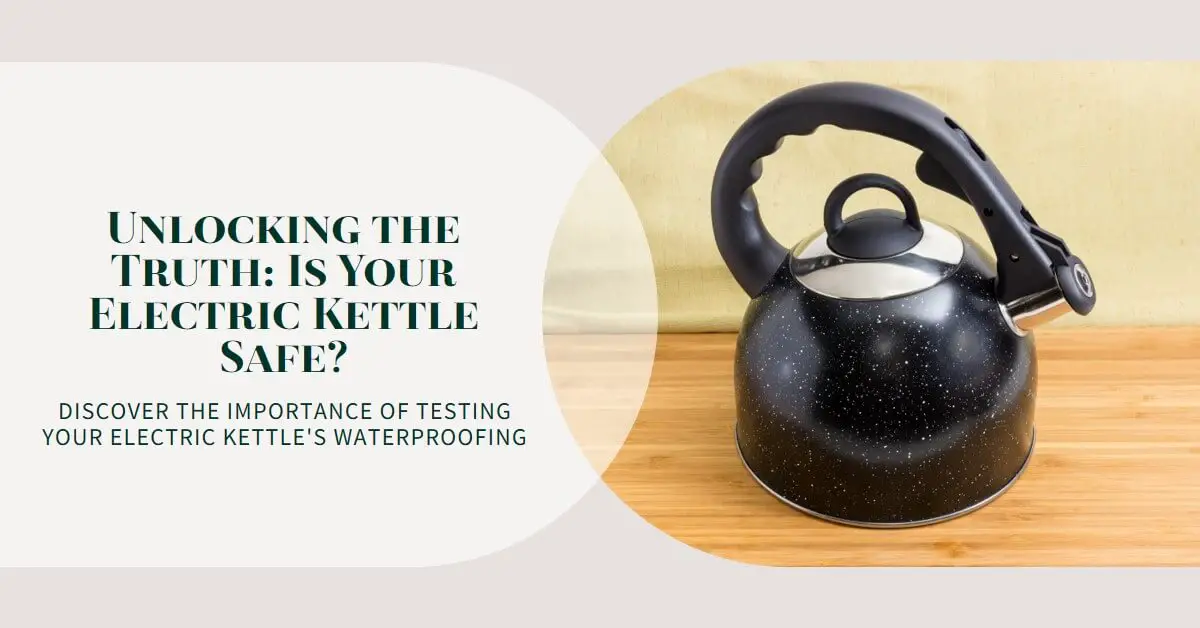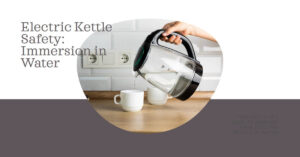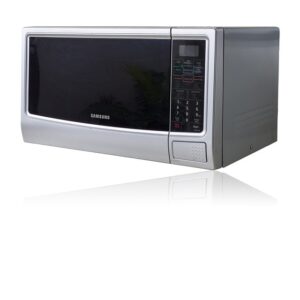Image: “Article Feature Image” by Bing, Source: [Bing Graphic Art].
Electric kettles are a common appliance in many households, providing a convenient and efficient way to boil water for various purposes.
When considering the safety of electrical appliances, it’s essential to address concerns about water contact and the waterproofing capabilities of electric kettles.
What Does Waterproof Mean?
Waterproof refers to the ability of a product or material to resist the penetration of water. In the context of electric kettles, it signifies the kettle’s ability to withstand exposure to water without compromising its functionality or posing a safety risk.
The International Protection (IP) rating system helps determine the degree of waterproofing in different electrical devices.
Electric Kettles and Water Contact
Electric kettles commonly come into contact with water during their regular usage. Water is poured into the kettle for boiling, and steam is released during the boiling process.
However, it’s crucial to understand that certain components of electric kettles, such as electrical elements and controls, should not be directly exposed to water.
The Safety Features of Electric Kettles
To ensure safety during use, electric kettles are equipped with various safety features. Two key features are the auto shut-off mechanism and boil-dry protection.
The auto shut-off feature automatically turns off the kettle once the water reaches boiling point, preventing over-boiling or overheating.
Boil-dry protection detects when there is an insufficient amount of water in the kettle and automatically shuts it off to prevent damage to the heating element.
Exploring Waterproof Electric Kettles
Waterproof electric kettles are designed to provide an extra layer of protection against water exposure, minimizing the risk of electrical hazards.
These kettles are specifically constructed with materials and features that enhance their resistance to water.
It’s important to note the distinction between “waterproof” and “water-resistant.” While waterproof electric kettles are designed to withstand water exposure, water-resistant kettles offer a lower level of protection and may not be suitable for prolonged contact with water.
Disclaimer: This contains affiliate links to Amazon products. I may earn a commission for purchases made through these links.
How to know if my kettle is waterproof?
To determine if your kettle is waterproof, you can follow these steps:
- Read the Manual: The user manual that came with your kettle should provide information about its water resistance or waterproof capabilities. Look for any specific instructions or warnings regarding water exposure.
- Check for Certification: Many appliances, including kettles, come with water resistance certifications. Look for labels like “IPX” followed by a number (e.g., IPX4) on the packaging or the kettle itself. These certifications indicate the level of water resistance the appliance has undergone testing for. The higher the number, the more resistant it is to water.
- Examine the Design: Inspect the kettle’s design for features that suggest water resistance, such as sealed seams, gaskets, or rubberized components around the lid, handle, and base. These features can help prevent water from seeping into the inner components.
- Avoid Submerging: Even if your kettle is labeled as water-resistant or waterproof, it’s generally a good idea to avoid fully submerging it in water. This could lead to damage or malfunction even if the kettle is designed to handle some level of water exposure.
- Contact the Manufacturer: If you’re uncertain about your kettle’s water resistance, you can contact the manufacturer’s customer support or visit their official website for more information. They can provide clarification and guidance on the water resistance capabilities of your specific kettle model.
- Use with Caution: If you’re unsure about the water resistance of your kettle, it’s best to err on the side of caution. Avoid exposing it to excessive moisture or water, especially if it’s not explicitly designed for such conditions.
Remember that water resistance and waterproofing can vary between different kettle models, so it’s important to understand the specifications and capabilities of your specific appliance to ensure its longevity and safe usage.
IPX Ratings and Electric Kettles
IPX ratings are used to classify the level of protection provided by electrical devices against water and solid particle ingress.
For electric kettles, the IPX rating indicates the extent to which they can resist water penetration. IPX ratings range from 0 to 8, with higher numbers indicating greater water resistance.
Understanding the IPX ratings can help consumers make informed decisions when choosing a waterproof electric kettle. For increased water resistance, it is recommended to select a kettle with a higher IPX rating.
Read also my article: The Submerging Dilemma: Can You Safely Immerse Your Electric Kettle in Water?
Assessing the Waterproof Capability of Electric Kettles
When evaluating the waterproof capability of electric kettles, several factors should be considered. These include the overall construction and materials used, the quality of seals and gaskets, and the IPX rating.
Reading product specifications and customer reviews can provide valuable insights into a kettle’s waterproof performance.
It is important to note that even waterproof electric kettles should not be fully submerged in water or exposed to excessive moisture, as this can still compromise their functionality and pose safety risks.
Maintenance and Care of Electric Kettles
To ensure the longevity and safety of your electric kettle, proper maintenance and care are essential. Regular cleaning and descaling procedures should be followed as per the manufacturer’s instructions.
It is important to avoid submerging the kettle in water or allowing water to enter areas not designed for contact with liquids, such as the base or control panel.
Common Myths about Electric Kettles and Water
There are a few common misconceptions regarding waterproof electric kettles. One such myth is that they are fully submersible and can be safely immersed in water.
However, it’s important to understand that while waterproof kettles offer increased resistance to water, they are not designed to be submerged.
Conclusion
When considering the purchase of an electric kettle, it is important to prioritize safety and consider the waterproofing features.
Waterproof electric kettles, with their enhanced water resistance, provide an added layer of protection against potential hazards.
By understanding IPX ratings, evaluating construction and materials, and following proper maintenance procedures, consumers can enjoy the convenience and safety of electric kettles without compromising their functionality or well-being.
Want to learn more about electricity? Check my YouTube channel!
Are You An Electrical Engineer or Electrician?
Install my Free On Google Play Now! It’s 100% Free
The staff I recommend (Amazon Affiliate Links to products I believe are high quality):
- Economy 120 Volt/60Hz AC Power Source – Step-Down Voltage & Frequency Converters 1800W
- UNI-T Digital Multimeter Tester UT139C
- 50-Amp Extension Cord for RV “100ft”
- Voltage Stabilizer 110/220v
- Hair Dryer “best selling“
- TOSHIBA EM131A5C-BS Countertop Microwave Ovens
Disclaimer: This contains affiliate links to Amazon products. I may earn a commission for purchases made through these links.


